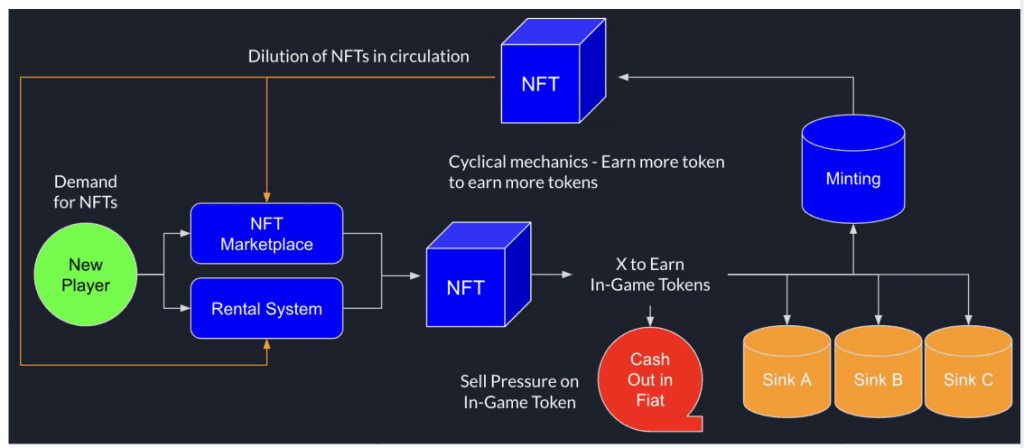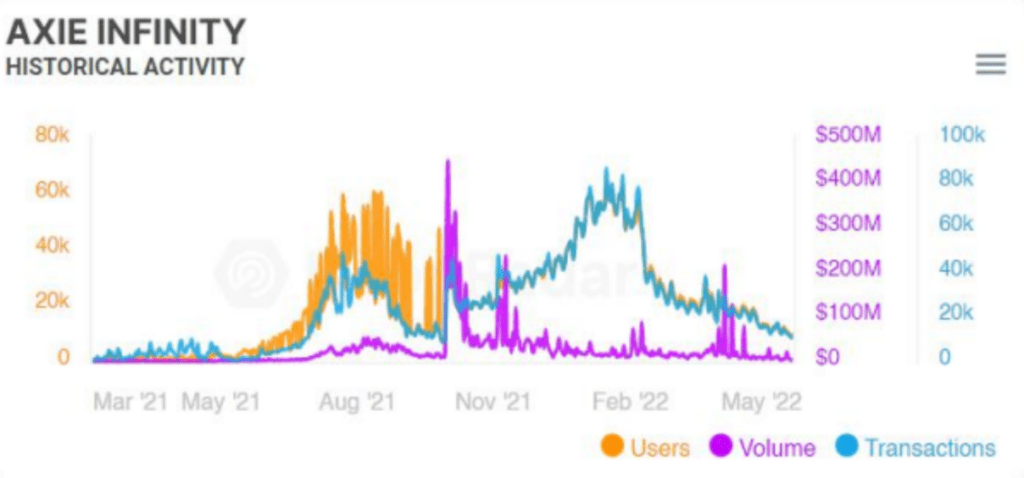Key Takeaways:
- StepN's GMT token's recent 60% rally might turn out to be a bull trap.
- GMT prices are moving inside a bear flag pattern with a -52% price target.
- StepN's issues with Ponzi accusations and its similarity with Axie Infinity's economic model might add bearish headwinds for its tokens.

NEW DELHI (CoinChapter.com) — ‘Move-to-earn’ game StepN’s native token GMT price’s recent rally saw its prices jump nearly 60% to an intraday high of $0.851 on Friday from Jun 13’s low of $0.54.
However, the recent uptrend might be a bull trap, considering GMT prices have formed a bearish pattern called the bear flag. The pattern forms when a cryptocurrency’s prices chart a sharp countertrend (the flag) after a short-lived trend. Flag patterns usually indicate a reversal of the countertrend.
In addition, in a bearish pattern, volume might not always decline during consolidation. Since an uptrend marks the consolidation period after a sharp downtrend, investors move in due to FUD from the price fall. Hence, higher than average volumes often accompany the consolidation period.

Traders calculate the bear flag pattern’s price target by subtracting the flagpole’s length from the breakout price level. GMT prices would likely fall to $0.402, a drop of nearly 52% from current prices.
If the StepN token breaks below the bear flag, traders who recently entered the market would likely suffer significant losses as they fall prey to the bull trap.
StepN’s Ponzi Issues
Australia-based Find Satoshi Lab launched the StepN game in Oct 2021, as crypto play-to-earn games’ popularity reached a crescendo. The game awards tokens to its users for walking, running and jogging.
Also Read: STEPN tokens recover following DDOS attacks —GMT, GST rally 13%.
Backers of the project stated StepN was a sustainable app that would provide a positive gaming experience to players. However, play-to-earn games started facing accusations of being a Ponzi scheme. Axie Infinity, a P2E game, failed to assuage its users and critics, resulting in its token prices plummeting.
Now, the move-to-earn gaming industry is facing similar allegations. StepN’s critics noted that earning money for walking seemed ‘too good to be true.‘

The game’s high cost of entry and a need for old users to not cash out also drew significant criticism. However, several StepN users have called the accusations a joke. StepN admitted that P2E games have dynamics similar to Ponzi schemes.
However, the team behind the game believes StepN can avoid becoming one through its strong tokenomics. The game also introduced an anti-cheat feature, stating that the ‘longevity and stability of the game‘ were the main priority of StepN’s developers.
Yet, StepN noted that several P2E games rely on a stream of new players joining the platform and continuous enthusiasm for their token’s price to remain high.
StepN Going The Axie Way?
Apart from sharing allegations of being a Ponzi scheme, StepN and Axie Infinity share a similar economic model.
In the Axie Infinity game, players earn Smooth Love Potion (SLP) tokens, while the AXS token serves as a governance token. The SLP token has an unlimited supply, while the AXS supply is capped at 280 million tokens.
However, after peaking at $164.90 and $0.39, respectively, AXS and SLP prices have been trending downwards. The tokens’ falling prices have severely impacted the ROI (return on investment), resulting in players moving to other games or platforms in search of better returns.

Axie Infinity recently significantly declined overall transaction volume and user growth. The introduction of an SLP burn mechanism in early 2022 spiked user activity on the platform. However, the numbers soon dwindled to pre-burning levels.
Axie economy failed to keep up with user growth, causing an SLP oversupply with insufficient burning pressure.
Like Axie Infinity, StepN has a game token, GST, with an unlimited supply. Additionally, GMT is the governance token of StepN, with a total supply capped at 6 billion tokens. A key difference is that StepN is yet to introduce a staking function on the platform.
Also Read: STEPN price swells 50% in just three days — Is GMT in a bull trap?
StepN introduced a buy-back and burn program for its GMT token in April. But, the ongoing bear market has GMT prices spiraling downwards after several corrections. In detail, GMT fell nearly 83% between $4.63 on Apr 28 and Jun 24’s intraday low of $0.8.
Moreover, if StepN’s ROI drops, the game might see a drop in user numbers. In addition, a mass sell-off by users would likely see the game’s tokens suffer a sharp supply shock.
While StepN has strived to address several pain points of the P2E/M2E sector and created more sinks than Axie Infinity, it would need to address its ROI’s dependence on user growth. In addition, a more entertaining game experience would also help the project.


